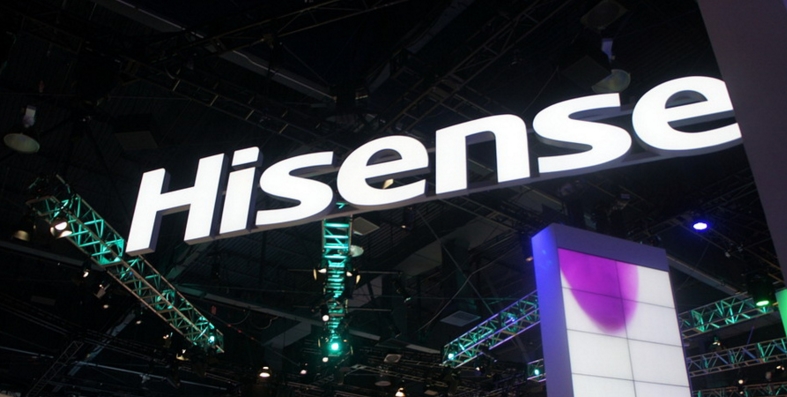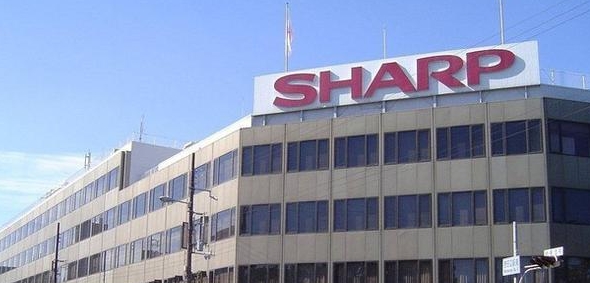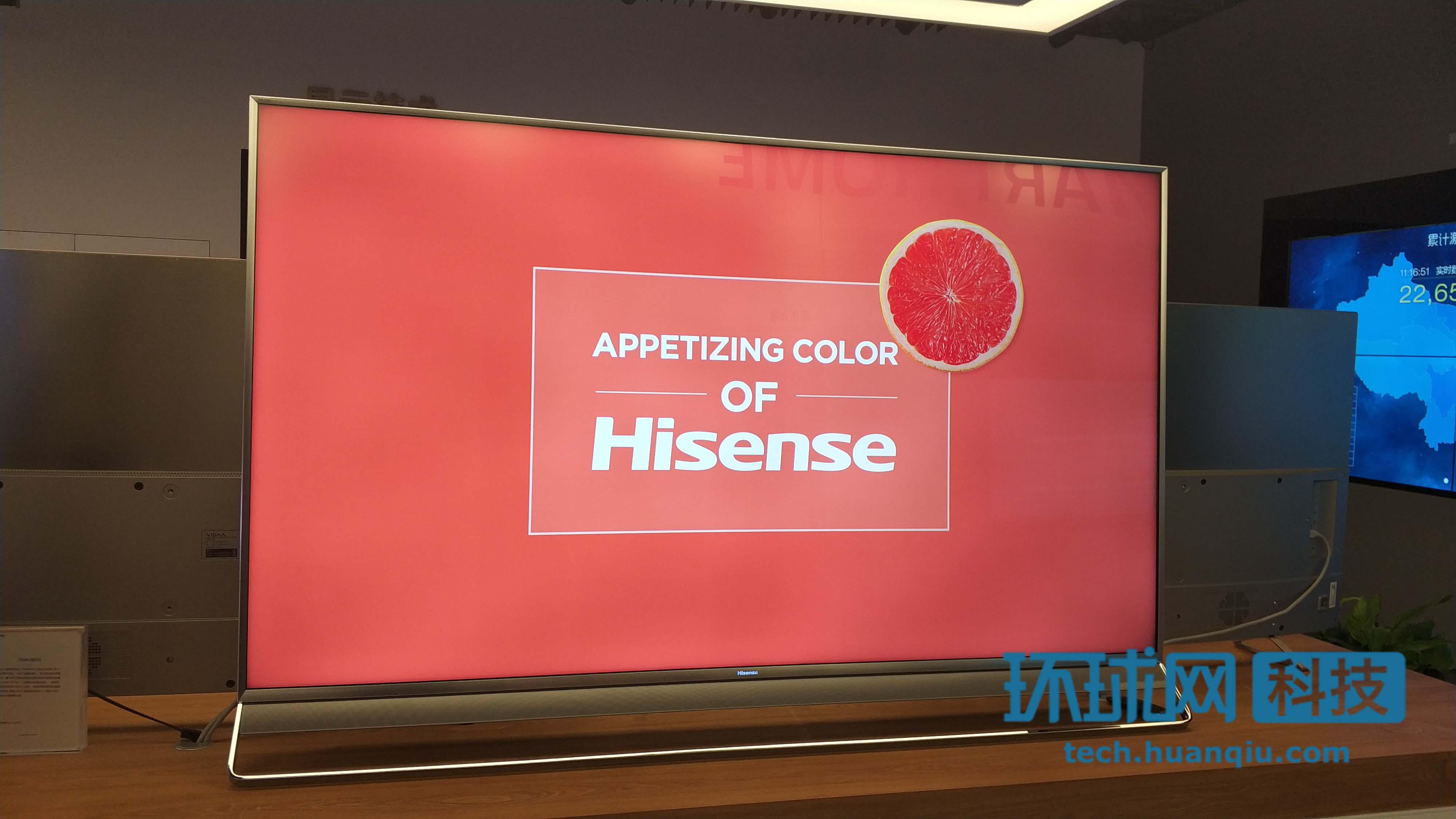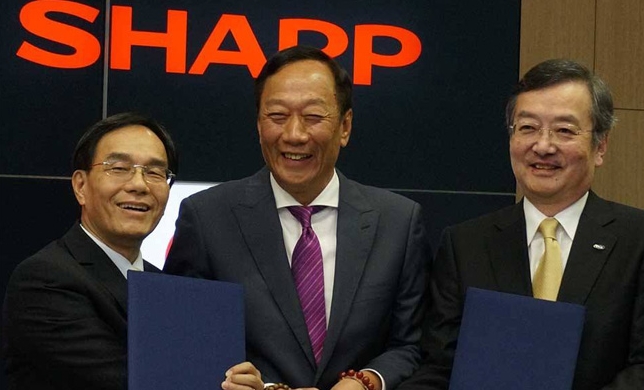ã€Global Network Science and Technology Reporter Wang Nan】 “The newly appointed Sharp president has unilaterally announced to the media that Sharpe’s brand in the Americas had not previously had any communication with Hisense. This reflects both the absence of a contractual spirit and its commitment to Hisense. Big disrespect.†Zhu Xi, deputy general manager of marketing at Hisense International, said in an interview with Japan Media recently.
Zhu Xi’s remarks came from a farce of modern farmers and snakes.

Origin: Competition for Brand Control in the North American Market
On June 9th, US time, Sharp initiated a lawsuit against the Chinese home appliance brand Hisense in the New York District Court and the California High Court. He said that Hisense sold "low-quality, low-cost" LCD TVs in the United States to harm Sharp's brand image and demanded Hisense. Stop using the SHARP trademark and file at least $100 million in damages.
The lawsuit began with the acquisition in 2015. On July 31st of that year, Hisense and Sharp jointly announced that Qingdao Hisense and its affiliated company, Hisense, jointly invested USD 22.88 million to acquire 100% shares of Sharp Mexico Co., Ltd., and at the same time obtained Sharp TV brand use rights in the Americas (except Brazil). And all channel resources for a period of five years (January 6, 2016 - January 5, 2021).
Talking about his acquisition at the time, Zhu Xi introduced that in 2015, Sharp, a tough and loss-making company, visited San Francisco five times to visit the company and hoped to find the best “people†for the “North American Sharp†child. It is in this context that Hisense decided to “solve difficulties†in the Sharp North American market: the acquisition took over the Sharp Mexico plant and hosted the Sharp North American brand (January 6, 2016 - January 5, 2021) sales.

"Afterwards, we sent troops to mobilize talents, revive factories, restore channels, and inject Sharp Hisense's ULED image quality technology into the near-stagnation Sharp. It can be said that after taking over Sharp, we made every effort and paid a great deal of effort: Sharp's products Product structure, market sales, and sales have all been significantly improved and improved. Sharp in North America has gradually returned to the normal “management approach.†Zhu Xi said.
Sharp pointed out in the original lawsuit submitted to the California High Court that, in order to highlight its product advantages, Hisense deliberately used Sharp's distribution network to sell low-quality products to harm Sharp's brand image. At the same time, Hisense also had false propaganda when using the Sharp brand.
In April 2016, Hon Hai Group announced that it had spent USD 3.5 billion to acquire 66% of Sharp's shares and obtained Sharp's global brand control.
The battle for brand control in the North American market began from then on.
Status: Sharp's sales increase in the United States by 50%
In an interview with the Wall Street Journal at the beginning of last year, Hon Hai founder, Gou Ting-ming, made it clear that Sharp’s acquisition is intended to improve Hon Hai’s value chain and it does not hope that Hon Hai is merely a low-margin brand foundry company. Terry Gou said that Sharp is a very popular brand and clearly stated that he must retain Sharp's brand.
Since then, Sharp has redefined its brand strategy and hopes to unify the control of global brands. But in fact, in addition to North America, another important market - Europe, Sharp's brand control is not in Sharp's own hands. In 2014, Sharp had reached a licensing agreement with UMC (UMC) to sell Sharp's European brand sales rights to UMC.
However, early this year, Sharp regained Sharp's brand sales rights in Europe by acquiring UMC's holding company. According to the analysis report of IHS, New Sharp hopes to resume sales of 10 million LCD TVs per year. Sharp will not allow the existence of "two Sharp" brands in the global market. This also made it necessary to resolve the issue of North American brand control.
Sharp Nomura’s vice president Masaaki Nomura stated at Sharp’s conference on the 30th that Sharp’s lawsuit against China Hisense in the United States is to protect consumers.
Previously, according to Japanese media reports, Sharpi’s litigation was mainly attributed to Sharp's belief that Hisense Group began to use Sharp-authorized brands in North America in 2016, but it violated contracts and sold low-quality products, making Sharp's brand evaluation fall sharply.
"For Sharp's licensing of the brand to China Hisense Group, basically want to restrain the comments, because the relevant issues are pending the outcome of the lawsuit." Nomura Kimura said at the meeting.
However, according to the Japanese Asahi Shimbun News, SHARP and other brands of television sales in the United States is very aggressive, current sales increase by 50%.
“According to the latest data, from January to June 2017, Hisense’s US brand sales increased by 97.7% year-on-year and sales increased by 100.7% year-on-year. In 2017, the total number of Sharp TVs in the US market is expected to increase by 47%, of which 4K TV is expected to increase by 360%. The market share of 4K TV will reach 7.8%. This is the result of the work and expected results of our custody. From the perspective of this half year, we see good progress.†Zhu Xi told Japanese media. “Hisense high-quality Sharp products have been unanimously approved by channels, professional assessment agencies and consumers.â€
However, Nomura Shengming pointed out at the Sharp Method Conference that he opposed the relevant statement and stated that this was a big gap for Sharp's original expectations of Hisense.
According to Nikkei News, Sharp announced last quarter (April-June 2017) earnings report that the final profit-taking consolidated net profit has changed from a loss of 27.452 billion yen in the same period of last year to a surplus of 14.477 billion yen for 7 years. For the first time, earnings rose; combined sales increased by 19.6% from the same period last year to 506.427 billion yen due to the expansion of sales of LCD panels and other products.
Confrontation: Hon Hai's "Wishful Thinking" and Hisense's Determination
Hon Hai’s Sharp’s commitment to the brand battle with Hisense also indicated that it will open up new television brands in the high-end market in the United States.
According to the Nikkei Shimbun early report, Hon Hai and Sharp plan to conduct thin-screen TV production in the United States. In addition to the planned large-screen television LCD panel factory, it plans to build a thin TV assembly plant in the United States, which will produce 8K TVs. Equal value-added products, and will adopt Hon Hai’s own “Humanized (labor-saving)†technology to reduce manufacturing costs, thereby enhancing the competitiveness of “Made in the USA†and opening up North America, the world’s second-largest thin TV market .

Regarding Sharp's involvement in the construction of the plant, Nomura Shengming pointed out that Sharp is expanding the LCD TV business in the global market and has conducted various evaluation activities for this purpose. And he said that Sharp plans to achieve an 8K-related business income of more than 300 billion yen before the 2020 Tokyo Olympic Games.
In this regard, Zhu Xi stated that Hisense is developing in the fierce market competition, and Hon Hai’s move will not shake our confidence and strategy in making high-tech products.
“We have 7 R&D institutions overseas and have the ability to conduct targeted development and design for the special needs of local consumers. Therefore, no matter whether it is quality, performance or design, we dare to accept challenges from all parties.†Zhu Xi said.
In addition, Hisense is also rapidly expanding its sales network, increasing its global share, and establishing strategic partnerships with major global mainstream channels.
Currently, Hisense has established a solid cooperative relationship with the local mainstream channels in the Americas, Europe, Asia Pacific, and Africa. In the United States, Hisense has established brand strategic partnerships with major chain channels such as Wal-Mart and Bestbuy, ensuring the sales of Hisense products in the US market through channels, and Hisense is the only Chinese color TV brand that has entered BBY, COSTCO, and Wal-Mart. In Europe, Hisense has successfully partnered with Germany's second largest chain channel to jointly promote the layout of Hisense's high-end products in the European market. In Australia, Hisense brand has entered the local mainstream chain channel.
For Sharp's lawsuit against Hisense in the United States, Zhu Xi also stated that Hisense is a company with a history of nearly 50 years. It also has years of accumulation and patents in television. We will continue to work hard to promote the Sharp brand and products, and we will earnestly fulfill the contract. . According to the contract, Sharp in North America will return to Sharp three years later.
According to the Nikkei News on the 28th, Taiwan’s Hon Hai Precision Industry’s investment in the United States has been fully launched. On July 26, Hon Hai Chairman Gou Tingming officially announced that it invested US$10 billion in projects such as large-scale LCD panel factories in Wisconsin, and proposed the idea of ​​starting with panel factories and constructing 8K and 5G related production bases in the United States.

(Image from the network)
Then, the North American trademark battle between Sharp and Hisense has not been able to make progress. Sharp's efforts to start business in the North American market are also receiving much attention from the industry. In the near future, the British media also expressed its dissatisfaction with Foxconn's (parent company is China Taiwan’s Hon Hai Precision Group) investment and construction in the United States.
The British Guardian recently published an article stating that Foxconn announced plans to invest approximately US$10 billion in the construction of a state-of-the-art liquid crystal display factory in Wisconsin. The news was widely publicized in the United States. But Wisconsin has a disturbing history in economic development. As a supplier of technology giants such as Apple, Google and Amazon, Foxconn lacks a good record in fulfilling its promises.
In addition, according to the "Washington Post" report, Foxconn has failed to fulfill the promise of similar employment opportunities in the past. In 2013, the company announced plans to invest US$30 million in Pennsylvania and recruit 500 people. However, this plan eventually came to an end.
Historically, Foxconn’s investment agreements in Indonesia, India, Vietnam, and Brazil have not been fully implemented. For example, in India, the company promised to invest 5 billion U.S. dollars in five years to create 50,000 jobs. According to the Washington Post, this goal is far from being achieved. Workplace safety issues will also threaten Foxconn's projects in Wisconsin; and the recent US “work rights†legislative activities will affect the relationship between workers and companies.
Can Hon Hai and Sharp build "Wishful Abacus" in the United States? How will Sharp and Hisense's lawsuits go? Although we are not yet known, Hisense published "Hisense never complains or fears anything." The remarks also seem to highlight a Chinese national brand "going out". It is the determination to overcome obstacles.
Indoor Rental Die-Cast 500x500
Indoor Led Panel Display improved competitive price with perfect effect and high quality. The Led Display Panel Die Casting Aluminum Cabinet size is 500x500mm and 1000x500mm for Indoor Usage, Best resolution for Rental Indoor Led Screen Panels P2.604mm P2.976mm P3.91mm P4.81mm, Rental Led Display Screen Panels to achieve uniform brightness and driving chip of high consistency and pixel brightness consistency.
Light and slim seamless connection design die-casting aluminum cabinet, it`s only 90mm in thickness which can achieve better wall mounted effect The cabinet is light, it`s only 28kg/sqm which is labor saving.
1) Stronger protection: LED chips are welded on the PCB board directly, then do encapsulation. It has excellent protection capabilities.
2) Higher reliability and stability: simpler process on material using and producing than SMD, so it has higher performance on heat dissipation to prolong life span.
3) Larger viewing angle: has larger viewing angle and is easy to control the loss of light refraction.
Easy Installation: magnesium alloy cabinet design and fast lock make the installation, transportation, maintenance easier
Lightweight: only 30kgs, saving workforce and transportation cost
High Waterproof Level: IP65 for rear and back side, fit for naked installation without decoration.
Adopt dual service of black kingkong series among core techniques, free back service path for all kinds of installation surroundings.Broadcast level color scale, color temperature and brightness adjustable intelligentizedly, smooth color, high color ratio, nature pictures.
We Jongsun LED is specialized manufacturer from Shenzhen China, which focusing on the research and development, production, sales and engineering services of terminal LED Displays. We have the perfectly after-sales and 7x24hours technical support. Looking forward your cooperation!
Indoor Rental Die-Cast 500x500,Led Panel Display, Led Display Panel, Led Screen Panels, Led Display Panels
Shenzhen Jongsun Electronic Technology Co., Ltd. , https://www.jongsunled.com